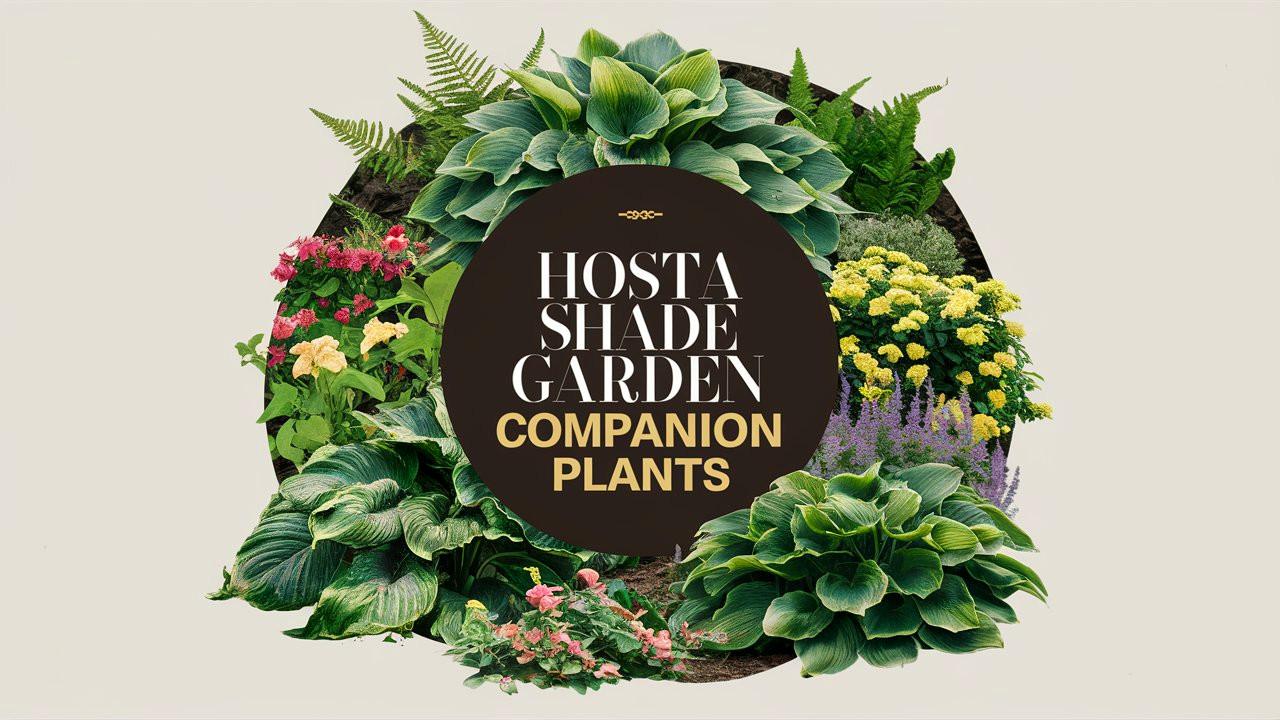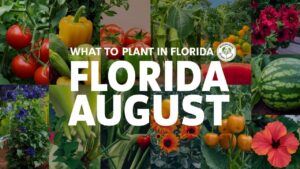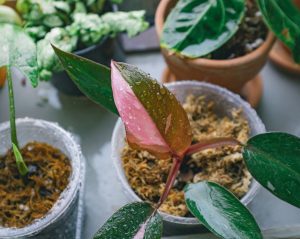Creating a shade garden can be a fulfilling adventure, especially when you choose the right plants to accompany your hostas. Known for their lush foliage and tolerant nature, hostas shine in shaded areas, but pairing them with compatible plants can elevate the entire garden’s beauty.
In this guide, we will explore a variety of companion plants that thrive in similar conditions, helping you create a vibrant and diverse shade garden.
Coral Bells
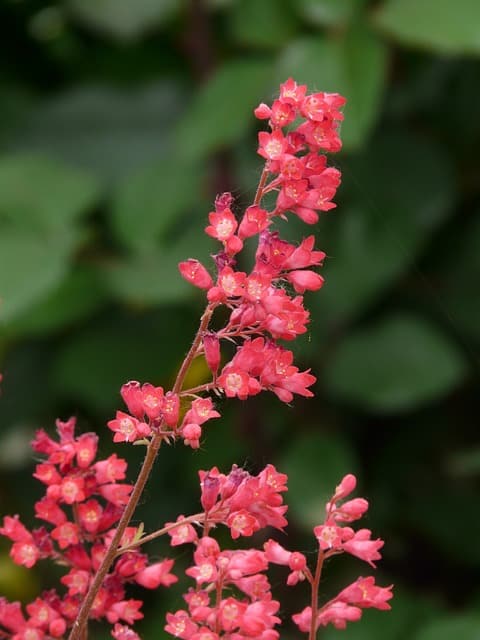
Coral bells (Heuchera) are an excellent choice to accompany hostas in the shade garden. These perennial plants produce vibrant foliage that can complement the diverse colors of hosta leaves. The leaves are not only attractive but also come in a variety of shapes and sizes, ranging from rounded to deeply lobed. Coral bells exhibit floral spires that bloom in late spring to early summer, adding vertical interest to the arrangement. They thrive in rich, moist soil and can adjust to various lighting conditions, making them versatile companions for your hostas. The range of colors, including shades of red, purple, and green, adds incredible depth to your garden, even during the dormant winter months.
Creeping Jenny
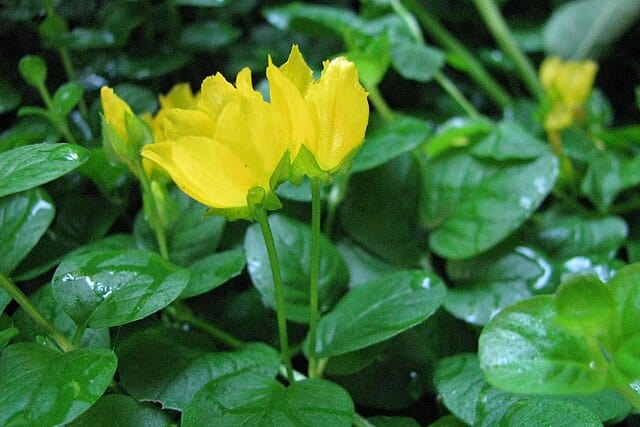
Creeping Jenny (Lysimachia nummularia) is a charming ground cover that works beautifully with hostas. This low-growing perennial boasts bright green foliage that turns a lovely golden hue in the fall, creating a stunning contrast to the broader hosta leaves. Its ability to spread quickly creates a lush carpet of color under the hostas. Creeping Jenny thrives in moist, well-drained soil and does well in partial to full shade. However, be cautious; its spreading nature can make it invasive if not kept in check. Regular trimming will keep it in the desired area and maintain its visual appeal.
Ferns
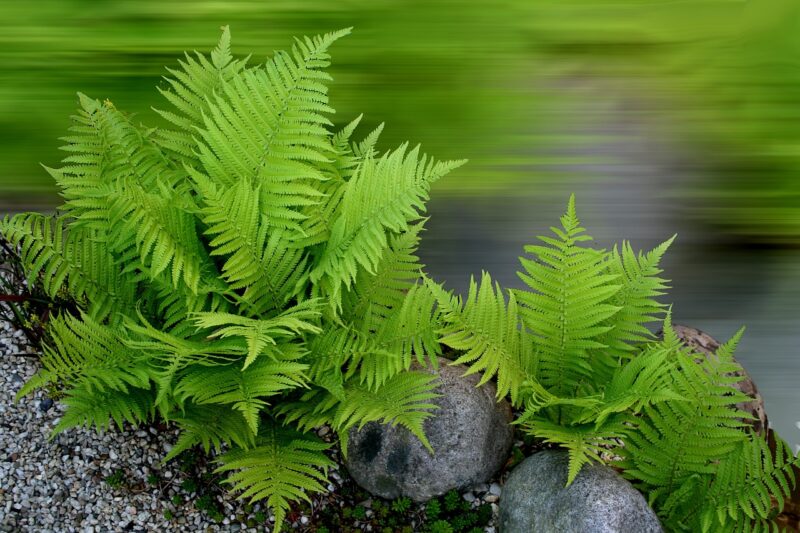
When it comes to shade gardening, ferns are among the most appropriate companions for hostas. With their delicate fronds and graceful arching shapes, ferns add a soft texture next to the bold foliage of hostas. Varieties like Japanese painted fern (Athyrium niponicum) or lady fern (Athyrium filix-femina) bring interest and complexity to your landscape design. Ferns thrive in moist, shaded areas, making them ideal companions alongside hostas. They also require minimal care once established and can create beautiful natural drifts that highlight the beauty of the hostas around them.
Tuberous Begonias
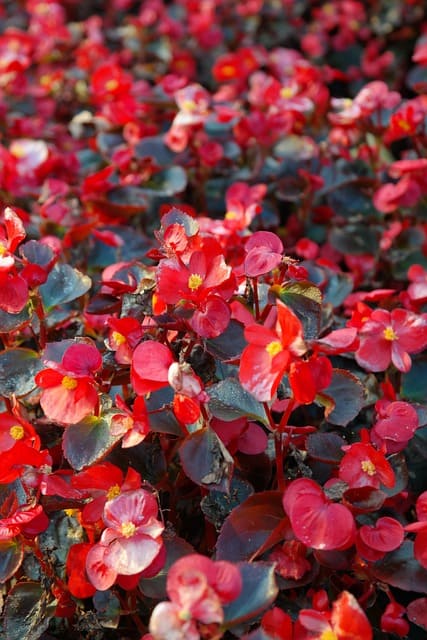
Tuberous begonias bring an extra pop of color to your shade garden. These flowering plants thrive under the canopy of trees or in shaded spots, where many other blooms may struggle. Their large, vibrant blossoms bloom in a variety of colors, from reds and pinks to whites and yellows, creating a stunning contrast against the lush green foliage of hostas. Tuberous begonias prefer well-draining soil and consistent moisture, so ensure they are planted in a spot where they won’t dry out too quickly. The striking flowers and beautiful leaves of begonias can create a wonderful visual symphony in your shaded paradise.
Vinca Vine
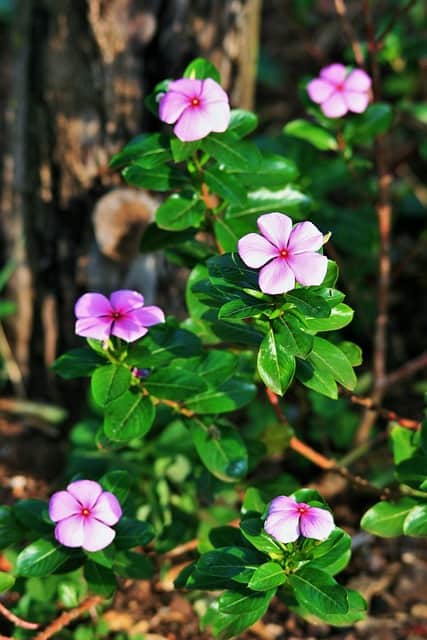
Vinca vine, or periwinkle (Vinca minor), is a reliable ground cover that pairs well with hostas in shady conditions. Its small, glossy leaves offer a lush green backdrop while its purple-blue flowers bloom in spring and early summer, adding delightful splashes of color. Vinca vine thrives in part to full shade and is a game-changer for preventing weeds in the garden. It requires minimal maintenance, making it perfect for beginner gardeners who may not have the time for regular upkeep. Just be mindful of its spreading nature, as it can become invasive if left unchecked. A strategic planting arrangement ensures it remains controlled and supportive of your hostas.
Hydrangeas
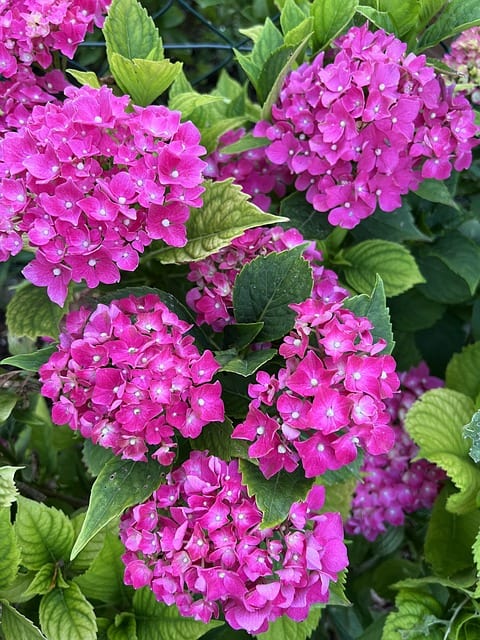
Hydrangeas are iconic shade-loving shrubs that can make a dramatic statement alongside your hostas. With their large, globe-like flower clusters, they add a burst of color to your garden. Depending on the variety, hydrangeas can bloom in shades of blue, pink, or white, creating a lovely contrast with the cool greens and blues of hosta leaves. They prefer moist, well-drained soil and a location with dappled sunlight or partial shade. When selecting hydrangeas, consider varieties like ‘Endless Summer’ or ‘Limelight’, which offer extended blooming periods and can thrive on similar watering and soil conditions as hostas.
Sweet Woodruff
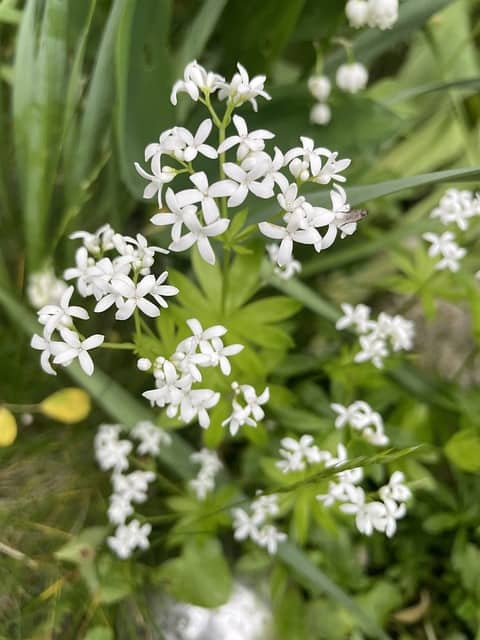
Sweet woodruff (Galium odoratum) is a fragrant, hardy ground cover that thrives in shade and is an excellent companion for hostas. With its whorled leaves and delicate white flowers in late spring, it adds elegance to the garden while also acting as a natural mulch due to its spreading nature. Sweet woodruff prefers consistently moist soil and can adapt to various light conditions, although it flourishes best in partial shade. Its sweet scent, particularly when dried, adds a lovely touch to woodland gardens and can enhance the overall ambiance of your hosta haven.
Tulips
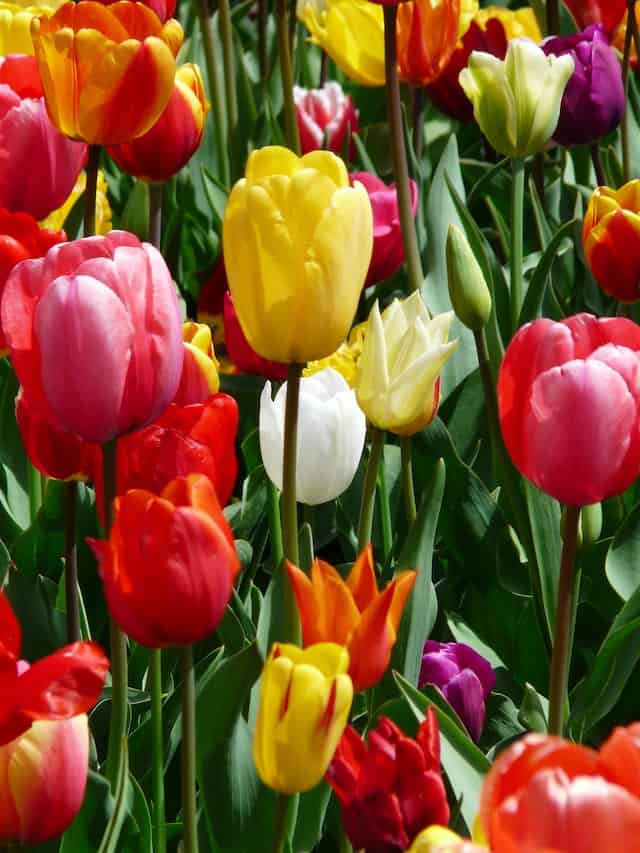
While tulips (Tulipa) are typically known for thriving in full sun, certain varieties can successfully bloom in partial shade, making them an engaging companion to hostas. The vibrant colors of spring-blooming tulips can inject delightful energy into your shade garden, creating a brilliant juxtaposition against the lush foliage of hostas. Dwarf varieties, in particular, are more adaptable to dimmer light. Remember to plant tulip bulbs in well-draining soil and provide ample water during their growing phase. Once they bloom in spring, the sight of tulips against your hostas will significantly enhance your garden’s visual appeal.
Brunnera
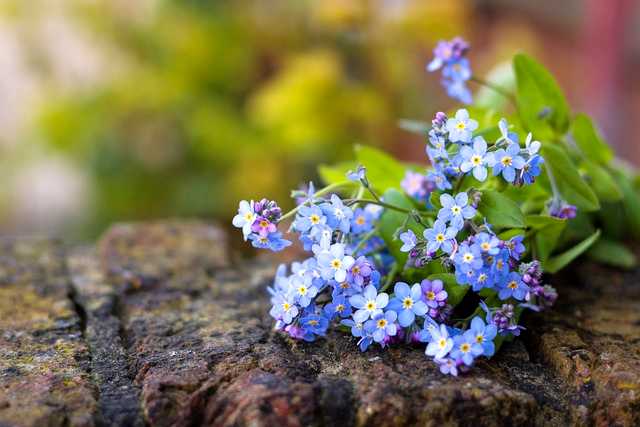
Brunnera macrophylla, commonly known as false forget-me-not or Siberian bugloss, is a superb companion plant for hostas. With its heart-shaped leaves and charming blue flowers that bloom in early spring, Brunnera adds a touch of whimsy to the shade garden. Its foliage can also come in variegated forms, complementing the various shades of your hostas. This versatile plant thrives in moist, well-drained soil and prefers partial to full shade. Its ability to flourish in similar conditions as hostas makes it an ideal choice, and it can effortlessly fill in the spaces in your garden while maintaining an attractive aesthetic.
Allium
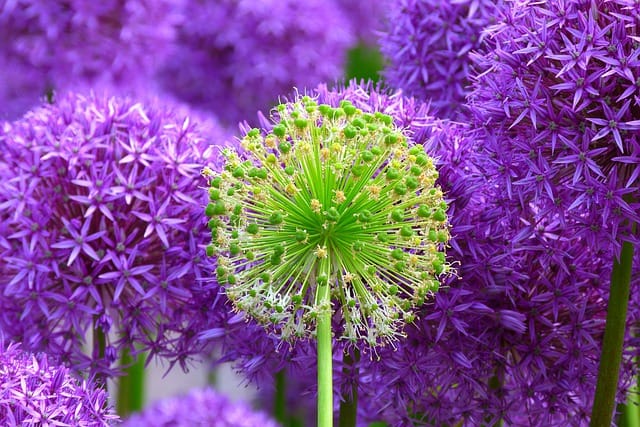
For those wishing to add height and architectural interest to a shade garden filled with hostas, Allium is the perfect choice. While many Allium species prefer sunnier spots, the diminutive varieties, like Allium moly, can tolerate partial shade and provide lovely globe-shaped flower heads. These flowers typically bloom in late spring and early summer, creating a stunning contrast against the broader foliage of hostas. Be sure to plant allium bulbs in well-draining soil. With their unique structure, Alliums add an unexpected surprise to your shade garden, enhancing the overall texture and variation.
Dogwood
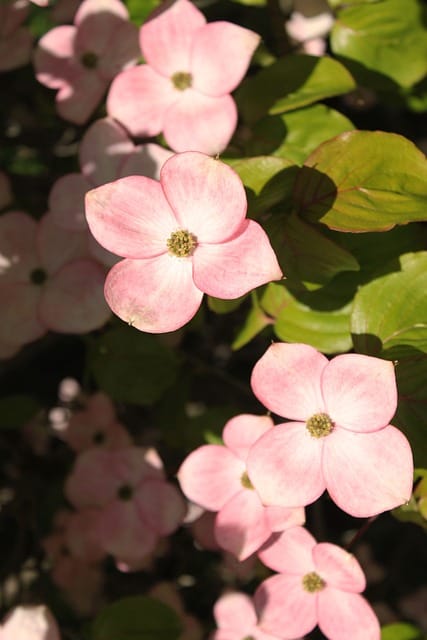
Dogwood trees (Cornus) can be excellent companions for hostas, particularly in larger gardens where they can provide dappled shade. Their beautiful blossoms in spring, followed by unique berries and vibrant fall foliage, create an attractive backdrop for hostas below. Depending on the species, dogwoods can range from small shrubs to larger trees, providing a variety of heights and structure in your landscape. When planting dogwoods, choose a variety that suits your space and sunlight conditions while ensuring they are planted in well-drained soil to encourage healthy growth alongside your hostas.
Clematis
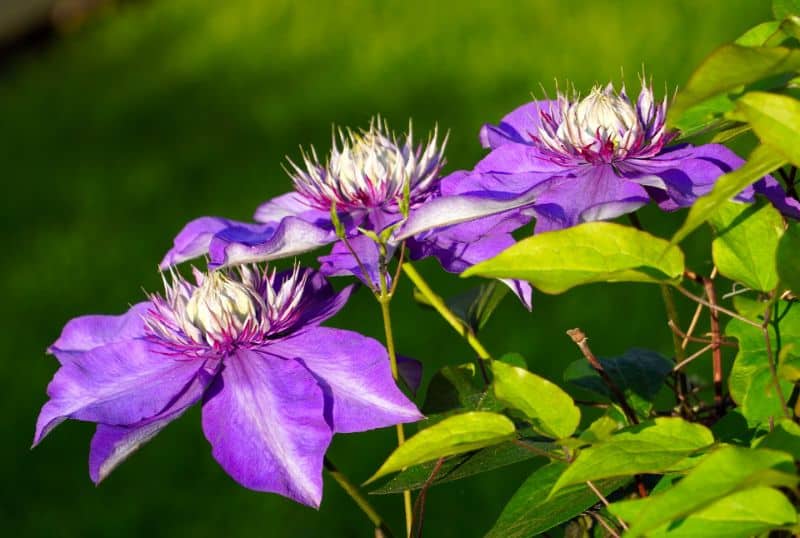
Clematis (Clematis spp.) can add vertical interest and color to your shade garden when paired with hostas. Certain varieties of clematis are well suited for partial shade, allowing them to flourish while climbing trellises or nearby structures. The beautifully ornate blossoms can range from purple and pink to white and blue, providing a stunning contrast against the lush foliage of hostas. Ensure you provide strong support for the climbing vines and plant them in well-draining soil. Clematis can create a delightful focal point in your garden, effectively elevating the visual appeal while remaining low-maintenance companions to your hostas.
Muscari
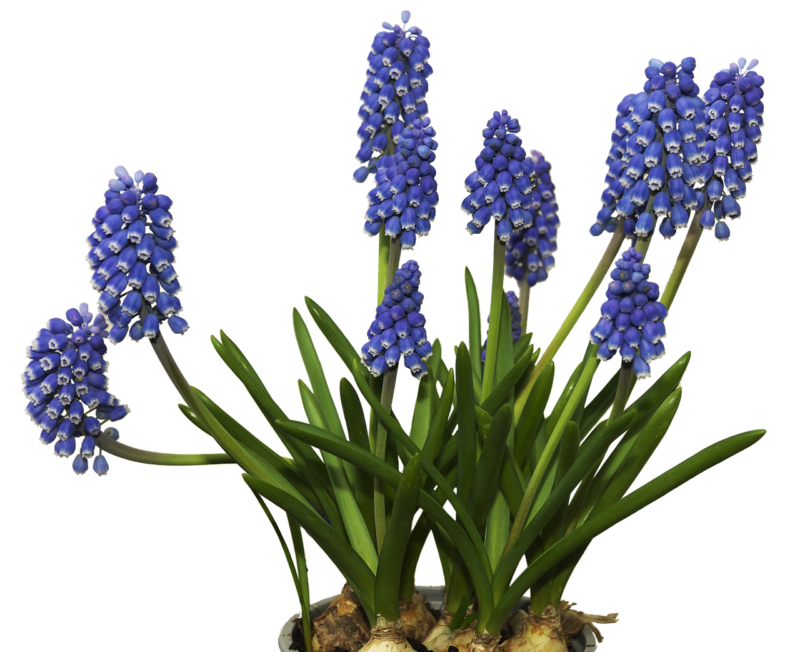
Muscari, or grape hyacinth, are charming, low-growing bulbs that can flourish in the dappled sunlight of a shaded garden. Their clusters of tiny, bell-shaped flowers bloom in early spring, producing stunning purple, white, or blue blooms. When paired with hostas, Muscari creates a colorful carpet beneath the large leafy plants. Additionally, they are relatively easy to care for and can naturalize over time, increasing their presence in your garden each year. Plant them in well-drained soil and provide a layer of mulch to help retain moisture. Their unique shapes and colors can add a playful touch to your hosta beds.
Alyssum
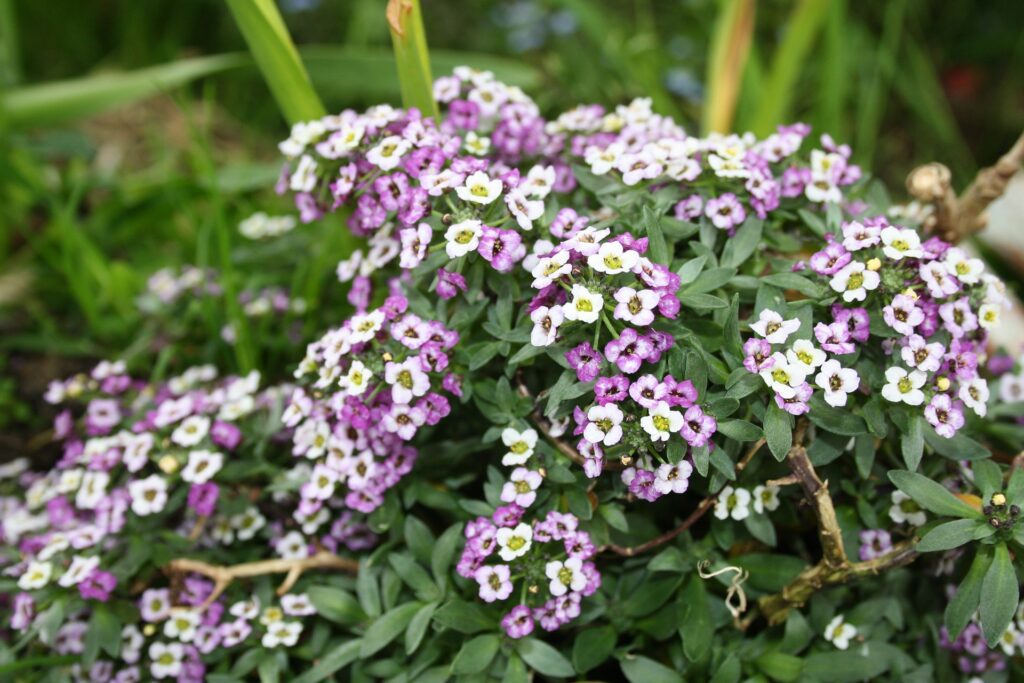
Alyssum (Lobularia maritima), known for its sweet fragrance and delicate flowers, can be a beautiful addition to the edges of a hosta garden. While they thrive in sunny conditions, some varieties can tolerate partial shade, allowing you to enjoy their soft white, lavender, or pink blooms amidst your host foliage. Alyssum grows low to the ground, making it excellent for filling in the spaces around hostas and creating a lush carpet of color. Its ability to attract pollinators can also enhance the biodiversity of your shade garden, making it a perfect choice for gardeners who appreciate both beauty and ecology.
Chives
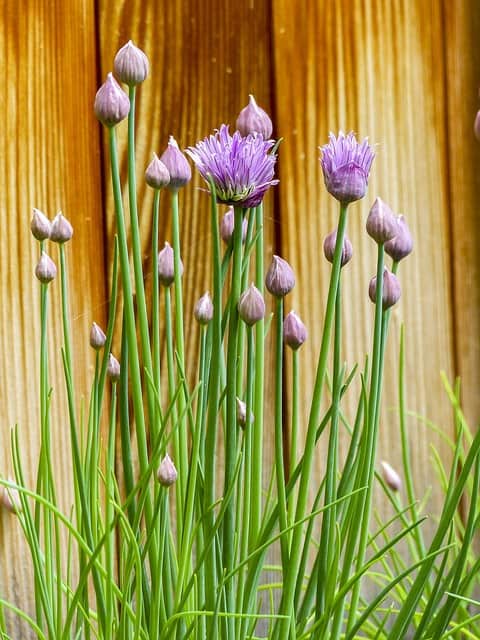
For a functional and edible choice, consider planting chives (Allium schoenoprasum) alongside your hostas. Thriving in partial shade, chives are an aromatic herb that adds both culinary use and visual interest to your garden. Their slender, grass-like leaves complement the broader hosta leaves while their purple-pink flowers bloom in late spring, enriching the garden environment. Chives thrive in well-draining soil and require minimal maintenance, making them ideal for beginner gardeners. Besides their culinary applications, the flowering heads can attract beneficial insects, contributing to a healthy garden ecosystem.
English Yew
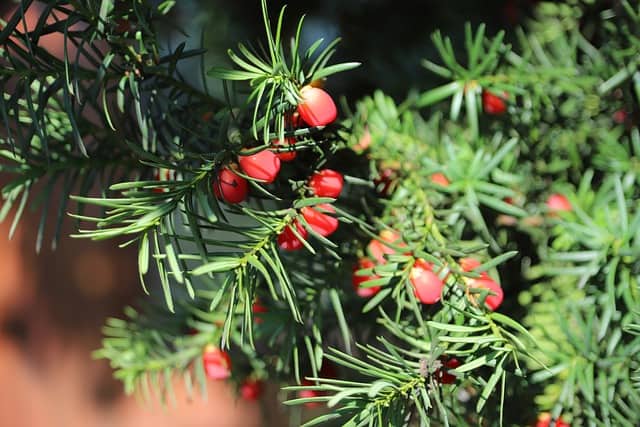
If you seek more structure and a touch of elegance in your shade garden, consider incorporating English yew (Taxus baccata). This evergreen shrub can provide year-round greenery while complementing the lush foliage of hostas. English yews can be shaped into hedges or left natural, creating a delightful contrast in texture when planted among hostas. They prefer well-drained soil, and their shade tolerance allows them to thrive alongside hostas in shaded environments. With their rich color and ability to define garden spaces, English yews elevate your shade garden’s aesthetic and longevity.
Lady’s Mantle
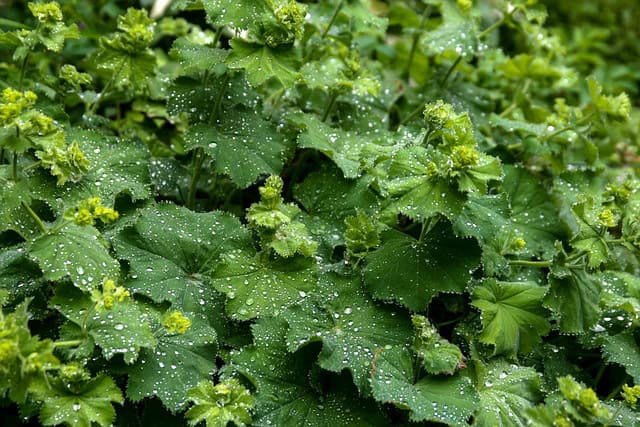
Lady’s mantle (Alchemilla mollis) is a versatile perennial that thrives in shady and semi-shade areas. Its soft, rounded leaves with scalloped edges create an excellent visual contrast next to the wider foliage of hostas. In late spring to early summer, lady’s mantle produces airy clusters of delicate yellow-green flowers that add lightness and charm to the garden. Not only is it a visually appealing choice, but its ability to hold dew drops on its leaves creates an enchanting morning display. Plant lady’s mantle in rich, well-draining soil to enhance both its growth and the vibrant atmosphere of your hosta garden.
Bleeding Heart
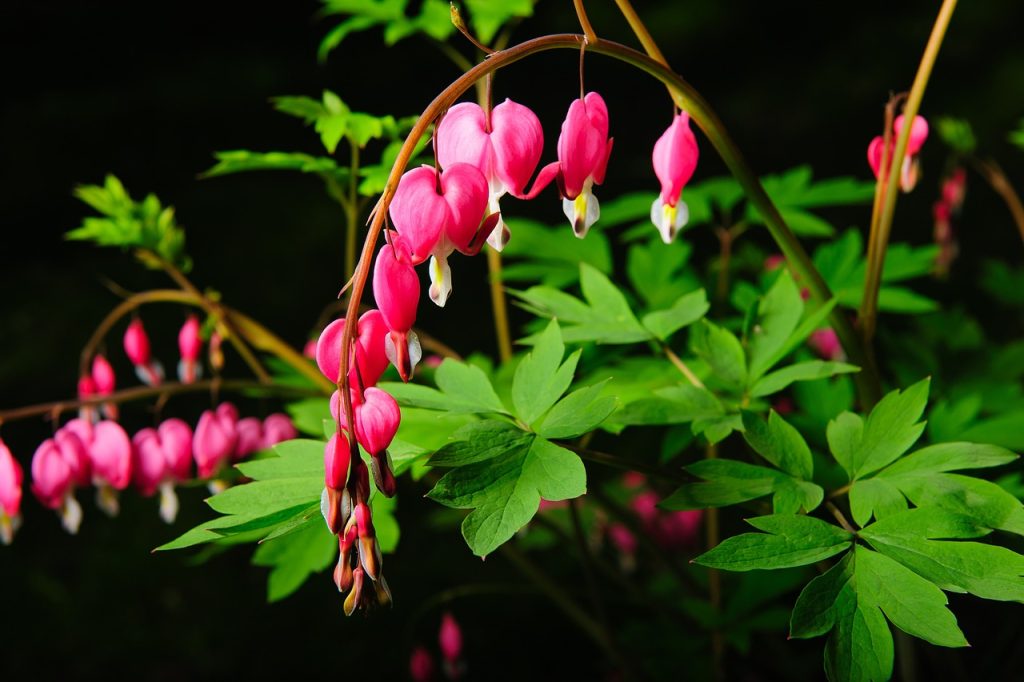
Bleeding heart (Dicentra spectabilis) brings a touch of whimsy to any shade garden with its unique heart-shaped flowers. Blooming in spring, these perennial plants come in various colors, including shades of pink and white, creating a lovely partnership with hostas. Their finely dissected foliage contrasts beautifully with the broader hosta leaves, while their arching stems provide elegant curvature and movement in the garden. Bleeding hearts prefer rich, moist soil and thrive in partial shade, making them easy companions to grow alongside hostas, setting an inviting tone in your shade garden.
False Goat’s Beard
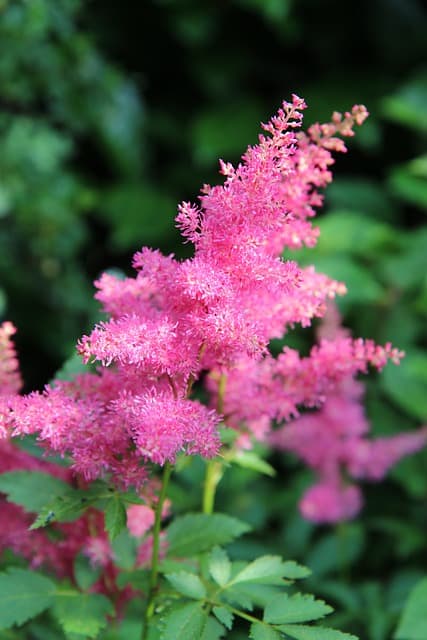
False goat’s beard (Aruncus dioicus) is a wonderful addition to any shade garden looking to enhance its lushness. This perennial produces tall, feathery plumes of creamy-white flowers in late spring to early summer, adding vertical interest to your landscape. The foliage is very similar in texture to ferns, providing that much-desired soft look in a shade garden. False goat’s beard grows best in rich, well-drained soil and does well in partial to full shade. By incorporating this plant, you’ll create a layered look that gracefully complements the hostas while also providing a burst of texture and movement.
Hepatica
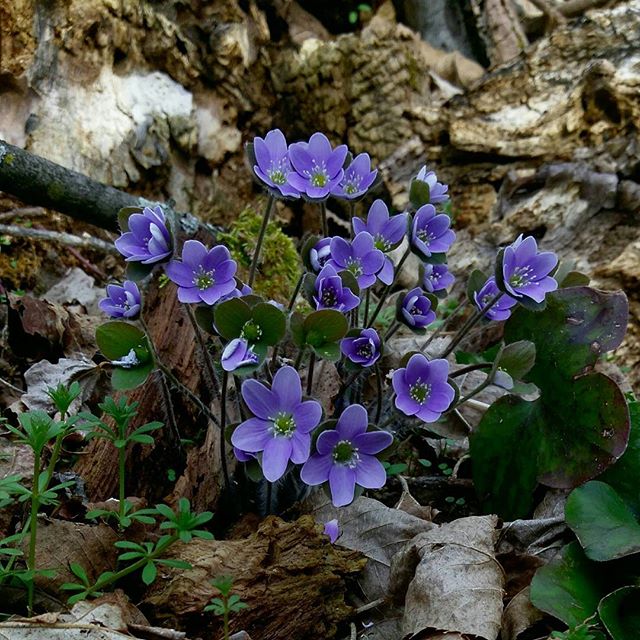
Hepatica (Hepatica acutiloba) is a sweet wildflower that shines in early spring, making it an excellent companion plant for hostas. Known for their delicate, star-shaped flowers that bloom in stunning hues of blue, purple, and white, hepatica adds delicate charm to your shade garden’s tapestry. They thrive in rich, moist woodland soil and prefer partial to full shade, allowing them to flourish alongside hostas. Once established, hepatica can self-seed, providing a natural spread of beauty in your garden. Their ephemeral blooms and attractive foliage enhance the overall aesthetics while embodying a spirit of resilience.
Cranesbill Geranium
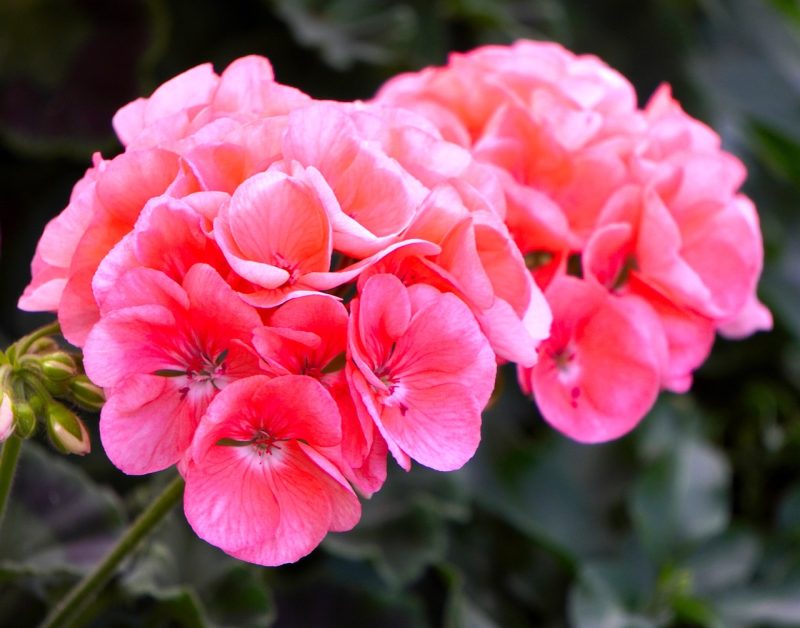
Cranesbill geranium (Geranium maculatum) is an excellent perennial that works harmoniously with hostas in a shade garden. With its round, scalloped leaves and cheerful pink or purple flowers, cranesbill not only brings color and vibrancy but also a soft texture to the landscape. They thrive in partial shade and prefer well-draining soil, making them great companions for hostas. Cranesbill geranium is adaptable and can spread easily, ensuring that it fills space beautifully without overpowering its neighboring plants. It self-sows, which can contribute to a continuous display of blooms year after year, further enriching the beauty of your garden.
Bugbane
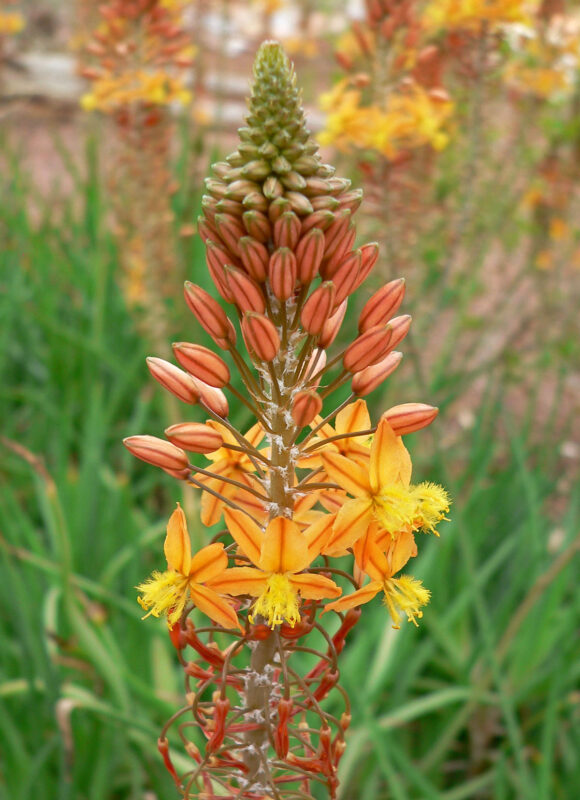
Bugbane (Cimicifuga racemosa), also known as Actaea, is an excellent plant to add vertical interest to your shade garden. With tall, wispy plumes of white flowers that rise above lush foliage, bugbane complements hostas beautifully while drawing attention with its elegance. It thrives in well-drained, moist soil, preferring partial to full shade, making it perfectly suited for the environment shared with hostas. The tall, dramatic presence of bugbane can create layers of height and texture, enriching the overall garden design. It’s also known for attracting pollinators, further enhancing the biodiversity of your shade garden.
Monkshood
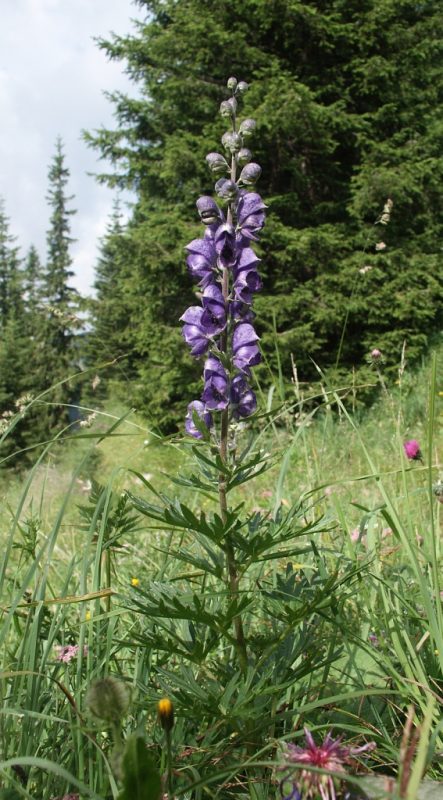
Monkshood (Aconitum), also known for its striking blue flowers, is a unique addition to a shade garden filled with hostas. Reaching heights that can stand out among your low-growing plants, monkshood provides an unmistakable focal point. While this plant prefers more acidic, well-drained soils and can tolerate partial shade, it requires care regarding placement, as all parts of the plant are toxic if ingested. However, its stunning appearance in late summer and fall makes it a worthwhile addition. When placed thoughtfully, monkshood can bring an enchanting, dramatic flair to your hosta-dominated garden design.
Pansies
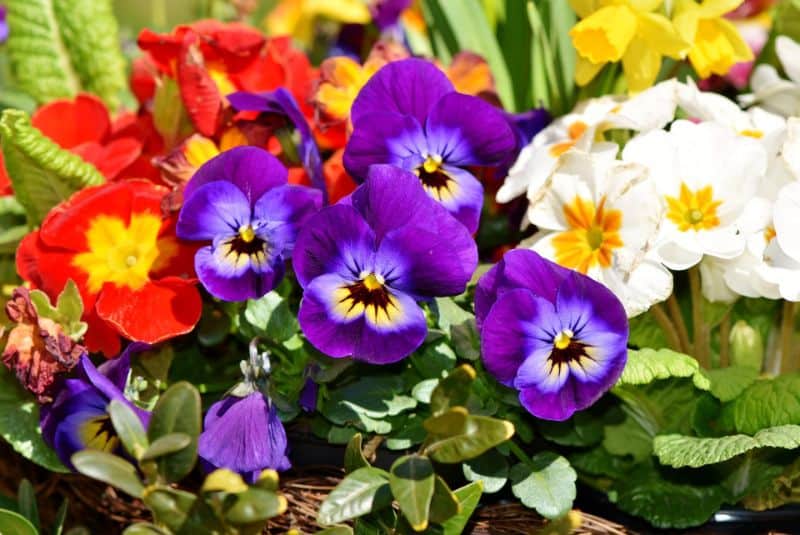
Pansies (Viola tricolor var. hortensis) are cheerful annuals that can brighten the shaded areas of your garden when planted alongside hostas. Their wide array of colors can bring joy and liveliness that contrasts the robust greens of hosta leaves. Although they prefer full sun, pansies can tolerate partial shade, especially in warmer climates, making them a resilient choice. Their compact size allows them to fill gaps around hostas without overwhelming the space, creating a refreshing and harmonious mix. Regular deadheading of faded flowers encourages continuous blooming and enhances the overall charm of your shade garden.
Bugleweed
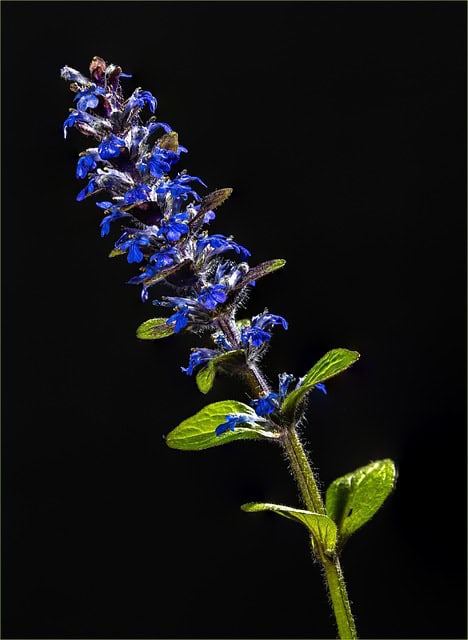
Bugleweed (Ajuga reptans) serves as a fantastic ground cover, making it another wise choice for pairing with hostas. Its luscious foliage is often spotted or variegated, which can bring a captivating visual element to your shade garden. Bugleweed blooms in spring with erect spikes of blue flowers, offering a burst of color that complements the hostas’ foliage. It grows best in moist, well-drained soil and can adapt to various light conditions, although it prefers shade. Its semi-invasive nature means you’ll want to monitor its spread, but with regular care and pruning, it can elegantly fill under-planter spaces while keeping your hostas beautifully framed.


